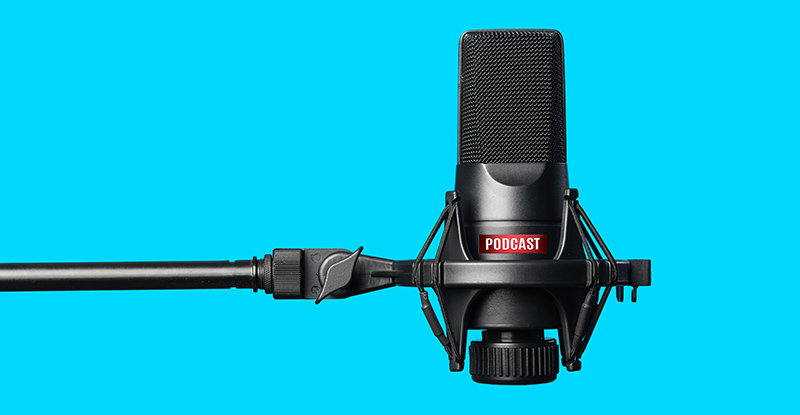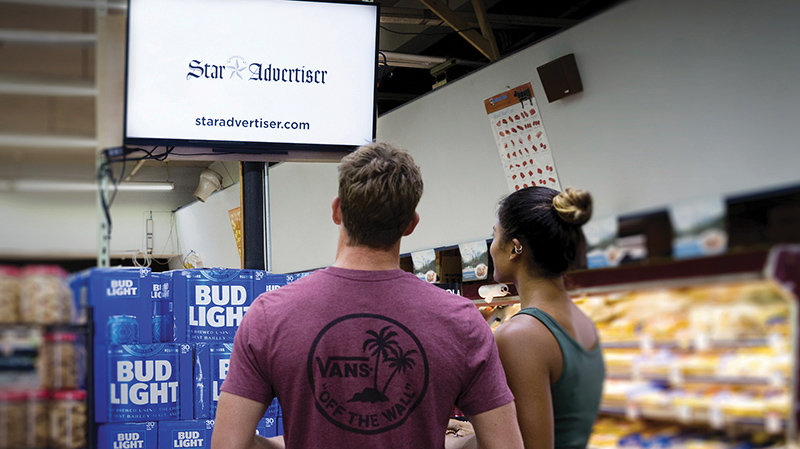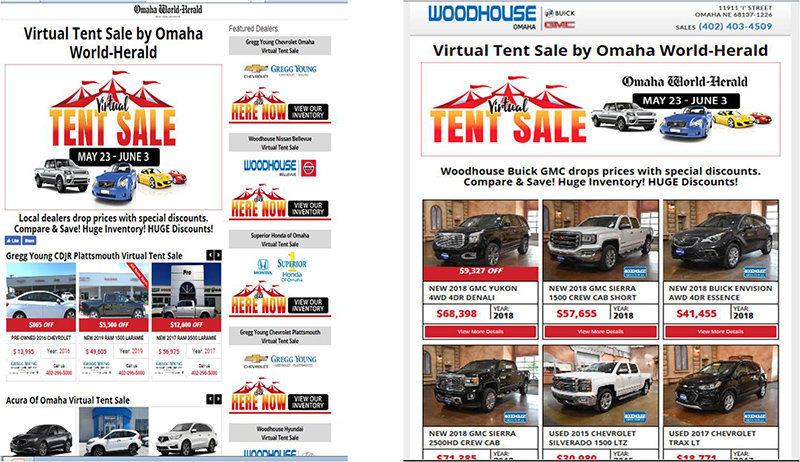
Years ago, a great portion of readers sought out newspapers because they were filled with coupons, job listings and apartment ads. Now, a majority of readers are searching online for those needs. This new atmosphere has made it more challenging for newspapers to land clients, but that doesn’t mean they have stopped going after advertisers.
Newspapers across the country, and even beyond our borders, have found ways of utilizing resources already in place in newsrooms, closing gaps in the market and finalizing deals with advertisers to increase revenue. E&P has compiled a list of these ideas for your newsroom to try. From newsletters to virtual sales events, these snack size strategies have a big bite.
Owning the Day
When the BH Media Virginia Group was tasked to come up with initiatives that would drive up fourth quarter revenue, the News & Advance created Own the Day. The yearlong revenue proposal offers advertisers a package including a front page sticky note on the print edition, a desktop note, a mobile presence, and an email blast. For this offer, the Lynchburg newspaper targeted new clients or clients they wanted to work with more.
The Own the Day package was deployed by News & Advance last September (although it had already been used at several other BH Media’s Virginia markets including Charlottesville, Bristol, Roanoke, Martinsville and Danville).
News & Advance advertising director Kevin Smith told E&P that all the client had to do was say they were interested, get their name down, and the newspaper would allow them to start whenever was best for them. Clients had a two week window to jump on board.
“Some (clients) wanted to sign up, but they ran into budget constraints,” Smith said. “We reminded them (that) they can sign up for a year. So if they don’t want to start until Jan. 1, they can start Jan. 1 with their new budget year.”
As a result of the campaign, News & Advance attracted 11 clients equaling $45,000 in revenue. The Lynchburg, Danville and Martinsville markets combined drew 25 new or reactivated clients totaling $69,000.
Connecting With Readers Face-to-Face
In today’s digital world, it’s easier than ever to connect advertisers with consumers. Yet, the Daily Herald Media Group in Arlington Heights, Ill. has systematized an approachable method to do so—face-to-face through events. The Daily Herald spent the last eight years developing their strategy.
“In the beginning, it was mostly events that were just matching the newsroom with readers (such as) a sportswriter’s event,” Eileen Brown, vice president/director of strategic marketing, said. “But then we started to expand to include advertisers for the revenue component.”
Brown shared that a smaller event might be a gardening class in a nursery, while one of their bigger events is their Fittest Loser experience, a 12-week weight loss competition, which in its first year drew a total of five contestants. But over the years, the event has gained sponsorship from the local hospital, fitness club and the grocery store, and is now signing up about 350 contestants.
At times, sponsors will approach the paper with ideas, and at others times, the Daily Herald will approach advertisers with ideas. How an idea originates and is planned varies, but one constant for the organization is striving for the perfect marriage of an event—one that fulfills the needs of the readers as well as the needs of the advertisers.
While the Daily Herald declined to share revenue numbers, Brown did say, “It is a revenue source for the company that has grown every year. And I think it’s (important) to stress that we’ve gotten people to advertise with us that would normally never advertise with a newspaper, people who stopped advertising with us to reengage, and current advertisers to spend more.”
 As more states legalize marijuana, more newspapers are tapping into the market.
As more states legalize marijuana, more newspapers are tapping into the market.
A Pot of Gold
As more governments legalize the use of recreational and medical marijuana, newspapers are developing new ways to tap into that group of advertisers by creating content through websites and newsletters. The Denver Post did it. So did Digital First Media, the Winnipeg Free Press, and more recently, the Boston Globe and Postmedia.
According to an International News Media Association (INMA) report, although medical marijuana has been legal in Canada since the early 2000s and recreational marijuana since 2015, Postmedia recently launched TheGrowthOp.com, a standalone website to educate consumers about the market. The website utilizes the Postmedia network of more than 160 publications.
One of those publications, the Financial Post, also launched its own weekly newsletter, the Cannabis Post. According to the INMA report, “The newsletter is 100 (percent) in compliance with the complicated rules surrounding the promotion of cannabis products and companies because subscribers must verify their age when signing up.”
The newsletter includes a list of how the top 10 cannabis stocks by market cap performed the previous week, cannabis business related events, notes on the latest trends or insights on the industry, and a tweet of the week from various industry players.
Advertisers come into play with the single “big box” ad and a sponsored quote at the end of the newsletter, providing them with a space to share their thoughts concerning the industry. A newsletter like this not only delivers information where there is a gap, but it also creates advertising opportunities.
The INMA report said Cannabis Post currently has a subscriber list of 20,000 and an “open rate has often been more than double the industry benchmark for similar newsletters in Canada.”

Podcasts Are Unstoppable
According to the second annual IAB and PwC Podcast Revenue Study, the U.S. podcast advertising revenue is expected to grow more than 110 percent by 2020 to $659 million.
As reported by Business Insider, 55 percent of U.S. respondents over the age of 18 say they always or sometimes pay attention to podcast ads versus radio (45 percent), TV (44 percent), music streaming services (41 percent) and online video ads (34 percent).
The Washington Post, Wall Street Journal and the New York Times are among the legacy newspapers investing in podcasts, and while the Guardian has also been in the playing field for some time, the media organization is now seeing the pay off with its latest podcast launch, Today in Focus.
Launched this past November, Today in Focus is a 20-25 minute briefing of the biggest news stories around the world. According to Digiday, the podcast accounts for a quarter of all its total listens and audience figures have grown 30 percent month-on-month.
The Guardian runs 30-second geo-targeted ads that run across Acast’s network and sponsorship ads that are produced by the Guardian for specific podcasts and audiences, like Bose, the podcast’s first sponsor, according to Nieman Lab. Nieman Lab also reported in September that all of the U.K. edition’s ad slots had sold out several months prior to its release.
The publication also recently started to use the platform to drive listeners to its membership program by running ads within the podcast.
 Digital billboards, such as the one seen here with the Honolulu Star-Advertiser, are a new way for advertisers to reach consumers.
Digital billboards, such as the one seen here with the Honolulu Star-Advertiser, are a new way for advertisers to reach consumers.
Digital Billboards
In April, the Tampa Bay Times began utilizing billboard technology by creating a newspaper rack equipped with 24-inch flat-screen monitor that was displayed at selected retail shops. Called TimesVision, the digital billboard features news content and marketing, in-store promotions, and advertising on a seven minute loop. As of April, there are 53 TimesVision monitors around Tampa Bay, according to Conan Gallaty, the Times’ executive vice president and chief digital officer.
In 2017, the Honolulu Star-Advertiser launched its own digital billboard network after some research found that the decline of broadcast media audiences left many advertising clients in the area with insufficient channels to utilize commercials they had created.
The newspaper began putting these screens in retail stores, and soon, 100 screens had been installed across Honolulu and Oahu. The screens features Wi-Fi, and loops news briefs, point of sale messaging, and 15 second commercials from third party advertisers.
The newspaper shared with E&P last year that in less than six months, 45 clients had signed on, and 85 percent of the $100,000 monthly incremental revenue stemmed from non-traditional newspaper advertisers.
“We leveraged our strengths to provide video content that was relevant to consumers and advertisers and, as a result, created a new profit center using the latest (digital out-of-home) technology that generated over $1.2 million in annual incremental revenue during its first year,” Star-Advertiser publisher Dennis Francis said last April.
Both the Star-Advertiser and the Times include sophisticated facial detection technology, solely for the purpose of measuring how many times content is viewed and to organize consumer data by approximate gender and age. They also articulate how this information is important to companies so that they may understand how effectively their ads perform on the digital billboards.
 “Feel good” Facebook videos have proved to be successful for the USA TODAY NETWORK.
“Feel good” Facebook videos have proved to be successful for the USA TODAY NETWORK.
The Right ‘Kind’ of Video
Despite the rise and fall of the pivot to video on Facebook, the USA TODAY NETWORK has found a way to turn a profit on the platform. The network launched a feel-good video series on Facebook called HumanKind in 2015, featuring acts of human kindness. The following year, it launched AnimalKind, a series focused on telling the stories of animals.
According to a Digiday interview with Russ Torres, vice president of digital video content and strategy, after adding the shows to Facebook Watch, viewership soared to hundreds of millions of monthly views per show. That success led to the creation of MilitaryKind in 2018. MilitaryKind offers inspirational stories of the U.S. Armed Forces.
A quick Facebook search will show that HumanKind currently has 5 million followers, AnimalKind 5.8 million, and MilitaryKind 3 million.
Video length for all three shows can vary, but Torres shared that viewers will typically watch 95 percent of the video, which is great news for advertisers. For example, MilitaryKind videos are about three minutes long, which makes them eligible for mid-roll ad breaks. The shows also generate revenue from YouTube and Xumo, and project has brought in national advertising sponsors, such as Geico and Chick-fil-A.
Michael Kuntz, president of national sales and brand partnerships, told Digiday, “You’re going to continue to see more brands pursue these opportunities—we’re seeing the evidence both through Facebook mid-roll ads and sponsorships.”
Friendly Competition
Nothing encourages people more than a little friendly competition.
At the five newspapers in the BH Media Alabama Group, a sales competition called Let’s Play Takeaway has motivated sales teams to get to the next level, while increasing revenue for the paper.
The competition takes place over a six-week period between sales representatives across the five markets, which include three dailies: the Dothan Eagle, the Opelika-Auburn News and the Enterprise Ledger. The contest is aimed at quickly capturing advertising dollars already flowing within the market, but not directed at the Alabama Group.
Now in its third year, this year’s competition took place from mid-February to the end of March with 19 sales reps participating across the group. Sales reps competed individually and the contest rewarded the top revenue producers with cash bonuses. There were rewards for the overall contest and daily and weekly prizes sprinkled in as well. By the end of the competition, 78 previously dormant accounts had reactivated, resulting in more than $51,000 in incremental revenue.
 Steve Smith
Steve Smith
“The competitive aspect of the contest injects some fun and energy between the individual sales reps,” Dothan Eagle publisher Steve Smith told E&P. “It adds excitement to the normal day.”
Smith also said this is relatively quick and easy to set up. First, they completed an audit of where advertising dollars were going and what media was being used. Each sales rep came up with at least 20 prospects to target. To be eligible, the prospects must have been spending ad dollars with other media but not with the Alabama Group in the previous six months. All media is audited and targeted, Smith said, including broadcast, print, niche, magazines, direct mail and social media.
 Wehaa partners with newspapers to help them recapture ad dollars from auto dealers. Pictured is the landing page from a recent Omaha World-Herald’s virtual tent sale.
Wehaa partners with newspapers to help them recapture ad dollars from auto dealers. Pictured is the landing page from a recent Omaha World-Herald’s virtual tent sale.
Virtual Sales Events
Auto dealers were one of the biggest markets newspapers lost when advertising began to shrink. But recently, newspapers like the Seattle Times, Omaha World-Herald and the Roanoke (Va.) Times were able to recapture those missing ad dollars by working with Wehaa, an internet company specializing in turn-key solutions for publishers.
By establishing an initiative called Automotive Virtual Sales Events and Promotions, the company was able to gather auto dealers in a virtual event hosted by a participating newspaper.
The program includes a sub domain on the newspaper’s website that will redirect to the virtual event, dynamic widget banners that rotates live inventory, social media advertising, print advertising and a detailed tracking report. The tracking report includes how many cars are sold, how many users were directed to a vehicle’s detailed page, social media reach, and because phone calls during the event are traceable and recorded, the company will add this to the report as well.
Mike Martoccia, Wehaa’s director of national digital marketing and sales, told E&P these are all things auto dealers typically do on their own, but by partnering with newspapers they can get the data without the extra work as well as reach a wider audience.
 Mike Martoccia
Mike Martoccia
Martoccia said the virtual event has been deployed with success in about 100 different markets (both large and small) across the country since it was created two years ago, including at the papers listed above.
Seattle recruited six automotive dealers, sold 1,551 vehicles and received 11.4 million page views, while Omaha recruited eight automotive dealers, sold 491 vehicles and had 7.6 million page views, and Roanoke recruited seven dealers (including automotive, boat and RV), sold 169 vehicles and saw 760,000 page views. Martoccia noted that a newspaper typically generates about $5,000 to $10,000 per virtual sales event.
Power of Promotions
In Stroudsburg, Pa., the Pocono Record implemented a strategic advertiser program that left clients thrilled. Known as the Custom Advertiser Promotion, the newspaper designed a unique media plan for each advertiser that reached their target audience through engagement, email, mobile, web, data, social media, and brand awareness.
 The Pocono Record ran a Custom Advertiser Promotion in March for a local electrical company, which generated new leads and revenue.
The Pocono Record ran a Custom Advertiser Promotion in March for a local electrical company, which generated new leads and revenue.
Stephanie Fairbanks, advertising sales manager, explained that each program is created to fit the client’s needs. Recently, a local electrical company, Hartmann Electrical Contracting, sponsored a special section of content in the newspaper.
“They received a full page ad in the section and a flight of digital display ads on PoconoRecord.com,” Fairbanks said. “We also set up a contest page and drove traffic to it using print, digital, social and email tactics.”
The contest also offered the chance to win a generator valued at $1,000 (courtesy of Hartmann) over a period of four weeks. The contest received more than 2,000 entries from more than 700 people. More than 80 of those people opted to be contacted to set up a free estimate for a home generator. The Pocono Record handed that list of people over to Hartmann, who then followed up with these potential new clients.
Fairbanks said the newspaper ran more than 50 promotions total last year and generated $130,000 from the Custom Advertiser Promotion. Because every program is built uniquely, they each yield different results. Some promotions can generate $1,500 while others can generate $15,000, Fairbanks said.
Acing the Quiz
Two years ago, the Seacoast Media Group in Portsmouth, N.H. launched a Best of Seacoast event. One of the winners was the Harbor Eyecare Center (Best Optometrist). The business used to advertise with Seacoast Media, and after winning in their category, Jim Sambold, a multi-media consultant for Seacoast Media, reached out to help them grow the practice.
The company wanted a creative way to educate people on eye health, while also grow their patient list. Seacoast Media pitched a campaign centered on quizzes, now known as the Harbor Eye Vision Health Quiz Bundle.
The campaign was deployed over a four month period last year, and it included custom quizzes, promotions, giveaways, and email blasts. After users took a quiz, they were prompted to share their email address for a chance to win a prize (for example, $250 towards their next pair of glasses).
Emails were scheduled to go out once a month in coordination with the giveaways. The emails highlighted eye health as well as different developing profit centers. Promotional emails and quizzes were also sent to Seacoast Media’s opt-in database. Sambold told E&P that the quizzes were taken 608 times by 330 participants. By the end of the campaign, the eye care center had acquired 250 new patients, and Seacoast Media netted $22,000.
Comments
No comments on this item Please log in to comment by clicking here